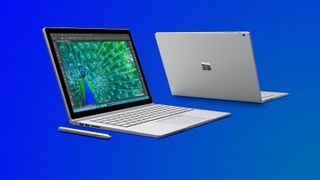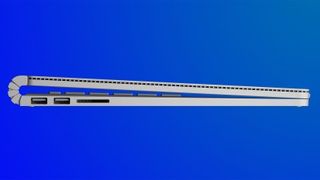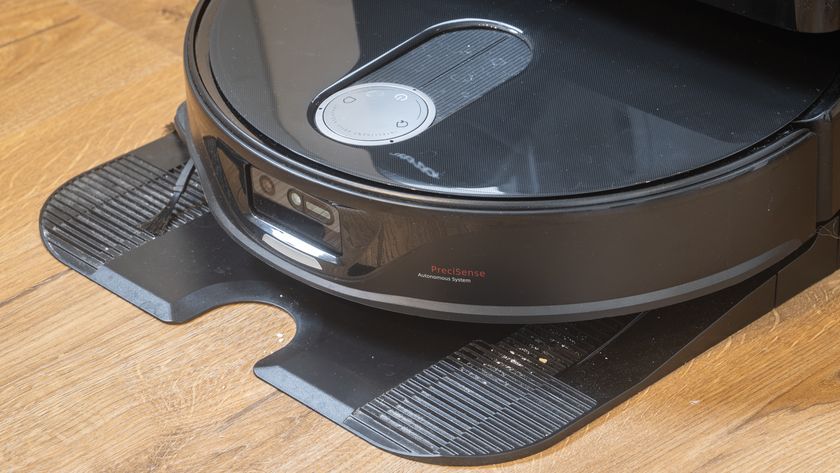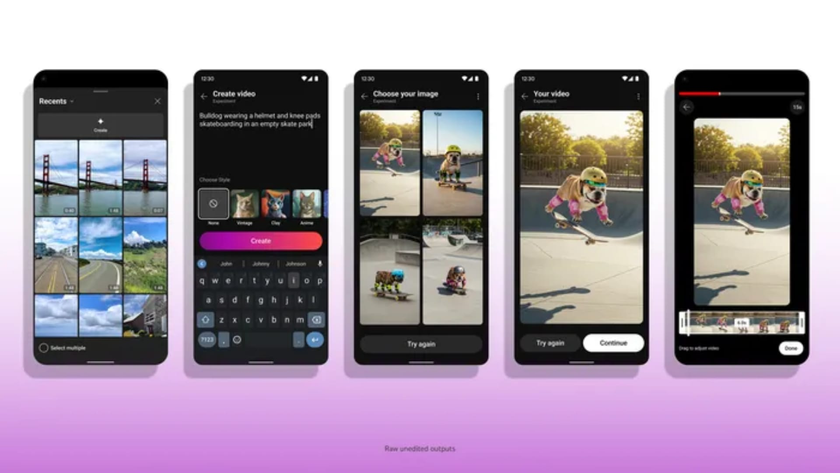Surface Book vs MacBook Pro
It's an Apple-to-Microsoft comparison
Display
The 13-inch MacBook Pro with Retina display has a resolution of 2560 x 1600 pixels, giving the display a 16:10 aspect ratio.
The Surface Book has a 13.5-inch screen with 267 pixels per inch, making for a crisp display. This means that Surface Book has slightly more pixels than the MacBook Pro, coming in at 3,000 x 2,000 pixels.
The Surface Book's display aspect ratio is similar to an A4 paper, and Microsoft says that this is the same 3:2 aspect ratio found on the Surface Pro 3 and Surface Pro 4.
This aspect ratio makes it more natural to use the Surface Book in tablet mode, as it feels more like a printed sheet of paper, but the screen isn't optimized for video consumption. You'll see letterboxing when watching 16:9 aspect ratio videos. In laptop mode, small business owners may appreciate the 3:2 aspect ratio as it could mean less scrolling on the Surface Book for productivity tasks, like browsing web pages and working in spreadsheets. This aspect ratio is also shared by Google's Chromebook Pixel.
Connectivity, ports and expansion
Both the Surface Book and MacBook Pro with Retina display comes with similar internal specs. Both computing devices can be configured with up to 16GB of RAM, 128GB to 512GB of solid state storage, Bluetooth 4.0 and Wi-Fi 802.11ac.
There are a few notable differences between the two devices. The first is that while the MacBook Pro comes with two Thunderbolt 2 ports, two USB 3.0 ports, an SD card reader and HDMI port, the Surface Book comes with a more limited selection of ports as it lacks the dual Thunderbolt ports and swaps the HDMI port for the Mini DisplayPort standard.

The Surface Book has two sets of cameras: a 5-megapixel web camera and an 8-megapixel rear camera. The MacBook only has a more limited 720p FaceTime HD camera.
Are you a pro? Subscribe to our newsletter
Sign up to the TechRadar Pro newsletter to get all the top news, opinion, features and guidance your business needs to succeed!
Small business users will likely benefit from the dual camera systems on the Surface Book, which can be used for video conferencing, documentation and scanning. However, the MacBook's included HDMI port may be more convenient for outputting video than Mini DisplayPort. The screen aspect ratio will boil down to a matter of preference, but both devices come with pixel-dense screens (267ppi on the Surface Book compared to 227ppi on the MacBook Pro).
Conclusion
In terms of sheer performance, you may be getting more out of the Surface Book, but when you add in more storage and memory, the $1,499 (£983, AU$2,091) starting price quickly jumps to $2,699 (£1,771, AU$3,765) on a fully configured system. Apple's system has a lower $1,299 (£852, AU$1,812) starting point and tops out at $1,799 (£1,180, AU$2,509).
Even though you may be paying less for a MacBook Pro, you may end up paying more if you need a tablet and decide to add an iPad or iPad Pro to your gear bag. What really matters is if you value the flexibility of having a tablet in a single device, and if having a touchscreen and pen support are important to you, then the Surface Book easily outshines the MacBook Pro.

Curiously, even though the Surface Book is targeted at more productive tasks, it lacks the face scanning RealSense 3D camera on the Surface Pro 4 and the fingerprint reader found on the optional Surface Pro 4 Type Cover to make it a truly compelling enterprise or business laptop.
Essentially, the Surface Book could be considered a slimmer Surface Pro 4, with a larger screen, that eschews the kickstand and Type Cover in favor of a sturdier keyboard dock.










